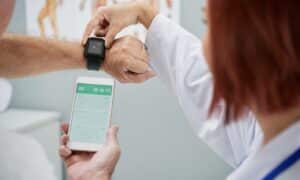Medically Reviewed By: Dr. Hanif Chatur
Table of Contents
ToggleKey Takeaways
- Innovative Telehealth Applications: RPPG technology is transforming remote patient monitoring by providing a contactless method to track vital signs, making healthcare more accessible to patients in remote locations or with mobility challenges.
- Advancements in Cardiac Health Monitoring: The non-invasive nature of RPPG is invaluable in cardiology for continuous cardiac monitoring, detecting irregular heartbeats, and predicting cardiac events, allowing for early intervention in heart-related illnesses.
- Revolutionizing Neonatal and Mental Health Care: RPPG’s gentle, non-contact approach is ideal for neonatal care, minimizing distress in newborns, while its ability to monitor physiological responses to stress and emotional stimuli offers new avenues in mental health and psychological research.
As a healthcare technology expert, I have been a first-hand witness to the transformative power that innovation has brought to the movement towards improving the net-payoffs for patients and streamlining medical processes. Remote Photoplethysmography, known as RPPG technology ranks among the most groundbreaking advancements. This non-invasive method for detecting blood volume changes in the microvascular bed of tissue is not just a novelty; it’s a versatile and trailblazing tool that’s pushing out the frontier of healthcare into unexplored territory. Let’s climb over the fence into the “Wild West” and have a sneak-peek at the top five uses of RPPG technology that are revolutionizing the field.
1. Telehealth and Remote Patient Monitoring
RPPG has made the old methods of monitoring vital signs completely redundant, as it offers a contactless process for the same activity, collecting data that is crucial for managing chronic diseases and post-operative care. For patients in remote locations or those with mobility challenges, it has suddenly brought the clinic into their remote towns, and in fact into their very homes. For instance, RPPG-enabled devices can measure heart rate, respiratory rate, and other vital signs from remote locations, and the data can be monitored in real-time by healthcare providers, enabling them to respond promptly to any emerging changes that deserve immediate attention.
2. Non-Invasive Cardiac Health Assessment
In the field of cardiology, the non-invasive nature of RPPG is a boon for on-going cardiac monitoring. By irregular heartbeats, monitoring stress levels, and even predicting potential cardiac events by observing the subtle color changes in the skin that indicate blood flow patterns, RPPG has the potential to save many more lives than is possible with normal time-lapsed physical monitoring. This technology allows the healthcare professional to devise intervention strategies at a very early stage of cardiac disease, which can be critical in preventing heart-related illnesses from becoming debilitating or potentially fatal.
3. Sleep Analysis and Management
In the past decade, a lot of work has been done to relate sleep disorders such as apnea with cardiac and respiratory illness some of which, if unattended or ignored, usually lead to unexpected fatalities. By monitoring physiological parameters related to the cardiovascular system, RPPG devices can analyze sleep patterns and detect disorders like sleep apnea without the need for uncomfortable overnight stays at a clinic. In fact, this is an excellent example of how RPPG is enhancing patient comfort while providing valuable diagnostic information.
4. Enhanced Neonatal Care
Monitoring the health of newborns, especially those suffering from difficult births, is difficult to manage because of their fragility. RPPG is proving to be particularly valuable in neonatal care, where the gentle, non-contact nature of the technology is ideal for monitoring these fragile newborns. It makes it possible for the continuous observation of a neonate’s heart rate and oxygenation without the distress or risk of skin damage that can come from adhesive sensors.
5. Mental Health and Psychological Research
The brave new world of the 21st century is just one hot, boiling cauldron of psychological stress, whether you’re an office worker, in the field, a homemaker, or a student. Keeping tabs on this stress is crucial not only for the physical and psychological health of people but also for the added costs of care not to mention the lost productivity at work. Beyond physical health, RPPG is providing insights into the autonomic nervous system’s response to stress and emotional stimuli and making significant contributions to psychological research . It has the potential to aid in diagnosing and monitoring mental health conditions by detecting physiological signs of anxiety and depression, thus enabling the physiological and psychological care providers to work together to develop a holistic approach to health.
The applications of RPPG technology are a testament to the exciting direction towards which healthcare is headed. With each innovation, we get closer to bringing into reality a world where health monitoring is seamless, integrated, and patient-centered. As we unlock the secrets of RPPG technology, we open up a world of possibilities for better health outcomes and a deeper understanding of the human body. Keep watching this space, because if one thing is certain, it’s that the potential of RPPG technology is just beginning to be realized.

Revolutionize Your Wellness Routine: Monitor Vital Signs Anywhere with Veyetals App

Experience the Future of Vitals Monitoring at HIMSS 2024

Understanding the Game-Changing Impact of Heart Rate Monitors on Cardiovascular Care and How You Can Use It
Unlock Your Health: Exploring the Power of Biometric Tracking for Wellness Insight

Revolutionizing ICU Patient Care: The Future of Contactless Monitoring Systems




